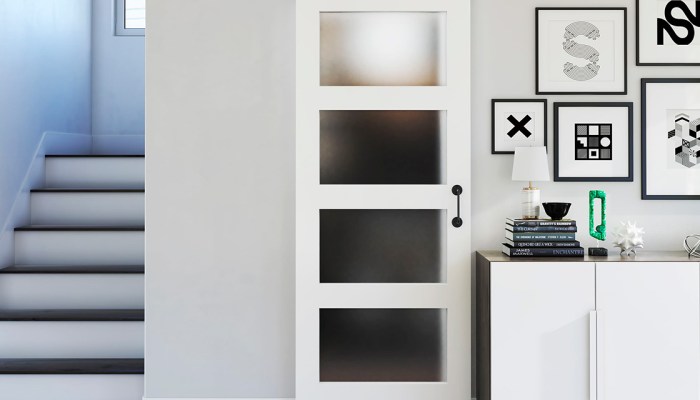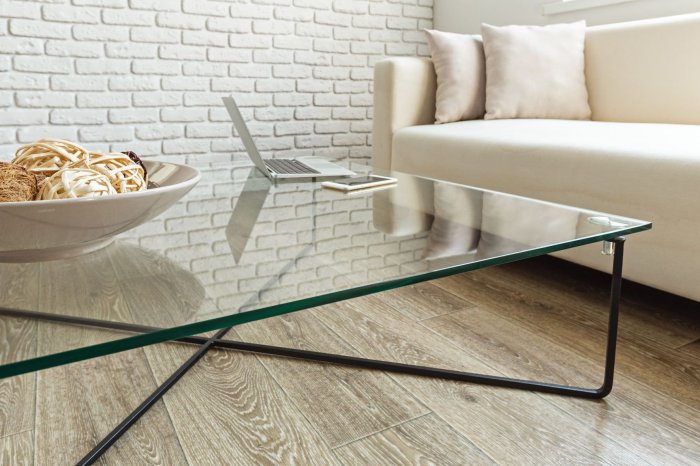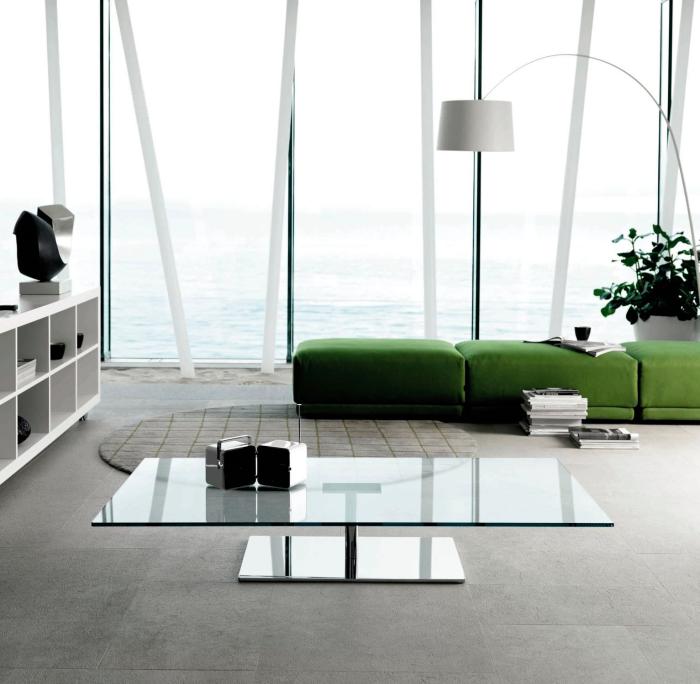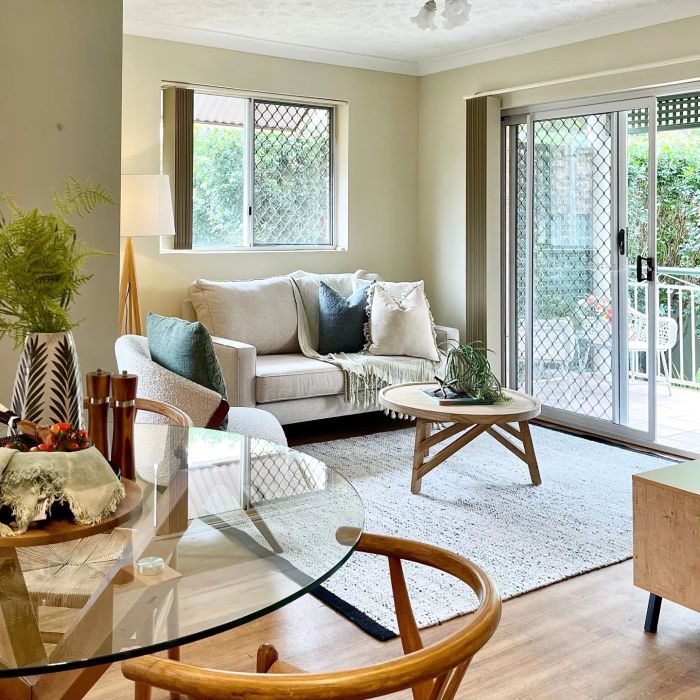Glass and wood living room furniture combo offers a unique blend of modern elegance and natural warmth. The juxtaposition of sleek glass surfaces and the rich texture of wood creates a visually striking and sophisticated aesthetic. This combination allows for a versatile design approach, adaptable to various interior styles, from minimalist to contemporary and even rustic. The transparent quality of glass can make a room feel larger and airier, while the wood provides a grounding element, adding depth and character.
The careful selection of wood type and glass finish is crucial in achieving the desired ambiance. Darker woods, like walnut or ebony, paired with clear or smoked glass, can create a dramatic and luxurious feel. Lighter woods, such as oak or maple, combined with lighter glass, can result in a brighter, more airy space. Consider the overall size and layout of your living room when choosing pieces; larger glass-topped coffee tables can create a sense of spaciousness, while smaller, intricately designed wooden side tables can add visual interest.
The living room, the heart of the home, deserves furniture that reflects both style and comfort. A compelling trend currently shaping interior design is the sophisticated blend of glass and wood furniture. This combination offers a unique juxtaposition of materials, creating spaces that are simultaneously modern, warm, and inviting. This article delves into the details of this stylish pairing, exploring its advantages, design considerations, and how to incorporate it seamlessly into your living room.

The Allure of Glass and Wood: A Design Synergy: Glass And Wood Living Room Furniture Combo
The beauty of a glass and wood living room lies in the contrasting textures and aesthetics. Wood, with its natural warmth and inherent beauty, brings a sense of grounding and organic charm. Glass, on the other hand, introduces a sleek, contemporary feel, adding lightness and visual spaciousness. This interplay creates a dynamic balance, preventing the room from feeling overly rustic or overly sterile.

Exploring the Versatility of Wood Types
The choice of wood significantly impacts the overall aesthetic. Light woods like oak or ash contribute to a bright and airy ambiance, perfect for smaller living rooms. Darker woods, such as walnut or mahogany, lend a sense of richness and sophistication, ideal for creating a more dramatic and luxurious feel. Consider the existing color palette of your living room and choose a wood tone that complements it harmoniously.
The grain and finish of the wood also play a role; a smooth, polished finish offers a modern touch, while a more rustic, textured finish adds a touch of vintage charm. Popular choices include cherry wood furniture, maple wood furniture, and even reclaimed wood furniture for a unique, sustainable option.
The Magic of Glass: Types and Applications
Glass in living room furniture isn’t just about coffee tables. It can be incorporated into various pieces, including side tables, shelving units, and even dining tables (if your living room is open-plan). The type of glass used also matters. Clear glass offers maximum transparency and light diffusion, while tinted or frosted glass provides a more subtle and diffused look.

Tempered glass is essential for safety, particularly in furniture that might be subject to impact or stress. Consider the level of transparency you desire and the overall style you want to achieve. For instance, a glass-top coffee table with a wooden base offers a clean, modern look, while glass shelving units with wooden frames can add visual interest to a wall.

Designing Your Glass and Wood Living Room
Successfully integrating glass and wood furniture requires careful planning and consideration. Here are some key aspects to keep in mind:
Color Coordination and Harmony
The color palette should complement the chosen wood and glass elements. Neutral colors like beige, gray, and cream create a versatile backdrop that allows the furniture to stand out. Adding pops of color through accent pieces, such as cushions or rugs, can add personality and warmth. Ensure that the colors chosen don’t clash with the wood tone; for example, warm wood tones pair well with warm-toned neutrals, while cool wood tones work best with cooler neutrals.
Balancing Light and Shadow, Glass and wood living room furniture combo
Glass furniture’s reflective properties can significantly impact the lighting in your living room. Consider the placement of your glass pieces in relation to natural light sources. Strategically placed glass elements can help maximize natural light, making the room feel brighter and more spacious. However, be mindful of potential glare, especially during the day. Using sheer curtains or blinds can help mitigate this issue.
Scale and Proportion
The size and proportion of your glass and wood furniture should be in harmony with the overall dimensions of your living room. Overly large pieces can overwhelm a small space, while overly small pieces can get lost in a large room. Consider the scale of other furniture pieces and choose furniture that maintains a sense of balance and visual harmony.
For instance, a large, imposing wooden sofa might be balanced by a sleek, glass coffee table.
Maintaining Your Glass and Wood Furniture
Proper care is essential to maintain the beauty and longevity of your glass and wood furniture. Wood surfaces should be regularly dusted and cleaned with a specialized wood cleaner. Avoid using harsh chemicals or abrasive cleaners that can damage the finish. Glass surfaces can be cleaned with a glass cleaner and a microfiber cloth. Avoid using paper towels, as they can leave streaks.
For stubborn stains, use a non-abrasive cleaner and a soft sponge. Regular maintenance will ensure that your furniture remains in pristine condition for years to come.
Frequently Asked Questions (FAQ)
- Q: Are glass and wood furniture pieces durable? A: Yes, when constructed properly using high-quality materials and craftsmanship. Tempered glass is particularly strong and resistant to breakage. Choose reputable brands and ensure the wood is treated for durability.
- Q: How do I clean glass and wood furniture? A: Use a specialized wood cleaner for the wood surfaces and a glass cleaner for the glass. Avoid harsh chemicals and abrasive materials. Microfiber cloths are recommended for both.
- Q: Are glass and wood furniture pieces suitable for families with children? A: While generally durable, certain precautions should be taken. Tempered glass is safer than regular glass, but sharp edges should be considered. Consider protective measures like corner guards for children’s safety.
- Q: Where can I find high-quality glass and wood furniture? A: Reputable furniture stores, both online and offline, offer a wide selection. Look for brands known for their quality materials and craftsmanship. Reading customer reviews can help you make an informed decision.
- Q: How do I choose the right style of glass and wood furniture for my living room? A: Consider your existing décor and personal preferences. Modern styles often feature clean lines and minimalist designs, while traditional styles incorporate more ornate details. Browse online resources and magazines for inspiration.
Sources
- Wayfair (Example – replace with relevant and credible sources)
- CB2 (Example – replace with relevant and credible sources)
- West Elm (Example – replace with relevant and credible sources)
Call to Action
Ready to transform your living room with the elegant fusion of glass and wood? Start browsing today and discover the perfect pieces to create your dream space! Explore our curated collection of glass and wood furniture to find the ideal match for your style and budget.
Q&A
How do I clean glass and wood furniture?

Use a glass cleaner for the glass surfaces and a wood cleaner or damp cloth for the wood. Avoid harsh chemicals.
Are glass and wood furniture pieces durable?
Durability depends on the quality of materials and construction. High-quality pieces should be quite durable with proper care.
What styles of living rooms best suit this furniture combo?
This combination works well in minimalist, contemporary, transitional, and even some rustic styles.
